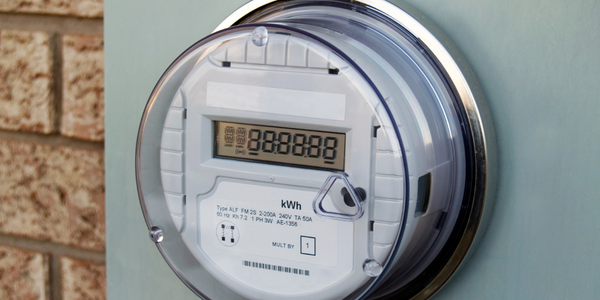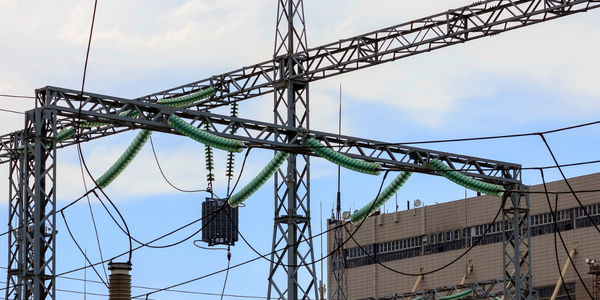Korea Meteorological Administration's Energy-Efficient Supercomputing with Altair's PBS Professional and AcuSolve

Technology Category
- Infrastructure as a Service (IaaS) - Cloud Computing
- Sensors - Environmental Sensors
Applicable Industries
- Construction & Infrastructure
- Electrical Grids
Applicable Functions
- Product Research & Development
Use Cases
- Virtual Prototyping & Product Testing
- Virtual Reality
Services
- System Integration
About The Customer
The Korea Meteorological Administration (KMA) is an organization of Korea's Ministry of Environment with a mission to protect citizens' lives and properties from natural disasters and improve the public commonwealth in ways that support economic activities. KMA observes and analyzes meteorological phenomena on the ground, in the ocean, and in the atmosphere, while providing weather forecasts and warnings, and presents climate statistics and industrial-meteorological data. KMA exchanges meteorological data and information with domestic and foreign organizations, conducts research and technology development activities, and prompts international cooperation. With 1313 civil servants, KMA operates a total of 97 weather stations including 11 radar, 5 upper-air observation stations, and 477 automatic weather stations.
The Challenge
The Korea Meteorological Administration (KMA) was faced with the challenge of reducing energy consumption while maintaining performance in their new Supercomputer Unit 4, a Cray® XC40™ system. This system, equipped with over a hundred thousand computing cores, runs quadrillions of computing jobs every second, which consumes a great deal of energy and causes high heat. To balance operations, it was essential to keep the National Center for Meteorological Supercomputer (NCMS) at a cool and constant temperature. However, the increased energy consumption required for Supercomputer Unit 4 put a significant burden on the air conditioning (A/C) system operations. KMA needed to determine the requirements for dealing with the additional energy consumption and cooling needs.
The Solution
To address this challenge, KMA collaborated with Cray and Altair to simulate the expected working conditions of A/C systems in its NCMS. KMA selected Altair’s PBS Professional for its workload manager and Altair's AcuSolve, a Computational Fluid Dynamics (CFD) solver, for the A/C system analysis. The approach started with modeling a dual structure of the KMA computing room floor using AcuSolve. This analysis focused on air flow conditions and hot spot phenomenon in KMA’s computing rooms, as well as the possible influence of operating a thermohygrostat, which can cool down room temperature. KMA and Altair Korea set several scenarios around turning off a certain number of thermo-hygrostats to reduce energy consumption in each computing room. Based on the results, they determined the minimum number of thermo-hygrostats that should work in each computing room, and also discovered that even if a minimum number of thermohygrostats are operated, the A/C system can work without any serious adverse effect on running the supercomputers.
Operational Impact
Quantitative Benefit

Case Study missing?
Start adding your own!
Register with your work email and create a new case study profile for your business.
Related Case Studies.

Case Study
IoT System for Tunnel Construction
The Zenitaka Corporation ('Zenitaka') has two major business areas: its architectural business focuses on structures such as government buildings, office buildings, and commercial facilities, while its civil engineering business is targeted at structures such as tunnels, bridges and dams. Within these areas, there presented two issues that have always persisted in regard to the construction of mountain tunnels. These issues are 'improving safety" and "reducing energy consumption". Mountain tunnels construction requires a massive amount of electricity. This is because there are many kinds of electrical equipment being used day and night, including construction machinery, construction lighting, and ventilating fan. Despite this, the amount of power consumption is generally not tightly managed. In many cases, the exact amount of power consumption is only ascertained when the bill from the power company becomes available. Sometimes, corporations install demand-monitoring equipment to help curb the maximum power demanded. However, even in these cases, the devices only allow the total volume of power consumption to be ascertained, or they may issue warnings to prevent the contracted volume of power from being exceeded. In order to tackle the issue of reducing power consumption, it was first necessary to obtain an accurate breakdown of how much power was being used in each particular area. In other words, we needed to be able to visualize the amount of power being consumed. Safety, was also not being managed very rigorously. Even now, tunnel construction sites often use a 'name label' system for managing entry into the work site. Specifically, red labels with white reverse sides that bear the workers' names on both sides are displayed at the tunnel work site entrance. The workers themselves then flip the name label to the appropriate side when entering or exiting from the work site to indicate whether or not they are working inside the tunnel at any given time. If a worker forgets to flip his or her name label when entering or exiting from the tunnel, management cannot be performed effectively. In order to tackle the challenges mentioned above, Zenitaka decided to build a system that could improve the safety of tunnel construction as well as reduce the amount of power consumed. In other words, this new system would facilitate a clear picture of which workers were working in each location at the mountain tunnel construction site, as well as which processes were being carried out at those respective locations at any given time. The system would maintain the safety of all workers while also carefully controlling the electrical equipment to reduce unnecessary power consumption. Having decided on the concept, our next concern was whether there existed any kind of robust hardware that would not break down at the construction work site, that could move freely in response to changes in the working environment, and that could accurately detect workers and vehicles using radio frequency identification (RFID). Given that this system would involve many components that were new to Zenitaka, we decided to enlist the cooperation of E.I.Sol Co., Ltd. ('E.I.Sol') as our joint development partner, as they had provided us with a highly practical proposal.

Case Study
Splunk Partnership Ties Together Big Data & IoT Services
Splunk was faced with the need to meet emerging customer demands for interfacing IoT projects to its suite of services. The company required an IoT partner that would be able to easily and quickly integrate with its Splunk Enterprise platform, rather than allocating development resources and time to building out an IoT interface and application platform.

Case Study
Bridge monitoring in Hamburg Port
Kattwyk Bridge is used for both rail and road transport, and it has played an important role in the Port of Hamburg since 1973. However, the increasing pressure from traffic requires a monitoring solution. The goal of the project is to assess in real-time the bridge's status and dynamic responses to traffic and lift processes.

Case Study
Hydro One Leads the Way In Smart Meter Development
In 2010, Ontario’s energy board mandated that time-of-use (TOU) pricing for consumers be available for all consumers on a regulated price plan. To meet this requirement, Hydro One needed to quickly deploy a smart meter and intelligent communications network solution to meet the provincial government’s requirement at a low cost. The network needed to cover Hydro One’s expansive service territory, which has a land mass twice the size of Texas, and its customers live in a mix of urban, rural, and remote areas, some places only accessible by air, rail, boat or snowmobile. Most importantly, the network needed to enable future enterprise-wide business efficiencies, modernization of distribution infrastructure and enhanced customer service. To meet these needs, Hydro One conceptualized an end-to-end solution leveraging open standards and Internet Protocols (IP) at all communication levels. The utility drew upon industry leaders like Trilliant to realize this vision.

Case Study
Selling more with Whirlpool
Whirlpool wanted to add connectivity to appliances and transform the company's relationship with customers. Traditionally, Whirlpool interaction with customers was limited to purchases made once every ten years. Connected washer and dryers provide exciting new features like remote management of start times and inter-machine communication.

Case Study
SAS® Analytics for IoT: Smart Grid
Companies face falling revenues, rising infrastructure costs, and increasing risk of outages caused by inconsistent energy production from renewable sources. Less money is coming in as more people and organizations take steps to curb their energy use. Utilities are paying more to maintain and build infrastructure due to increasing complexity, resulting from the rising number of intermittent and variable renewable energy sources connected in the distribution grid.


